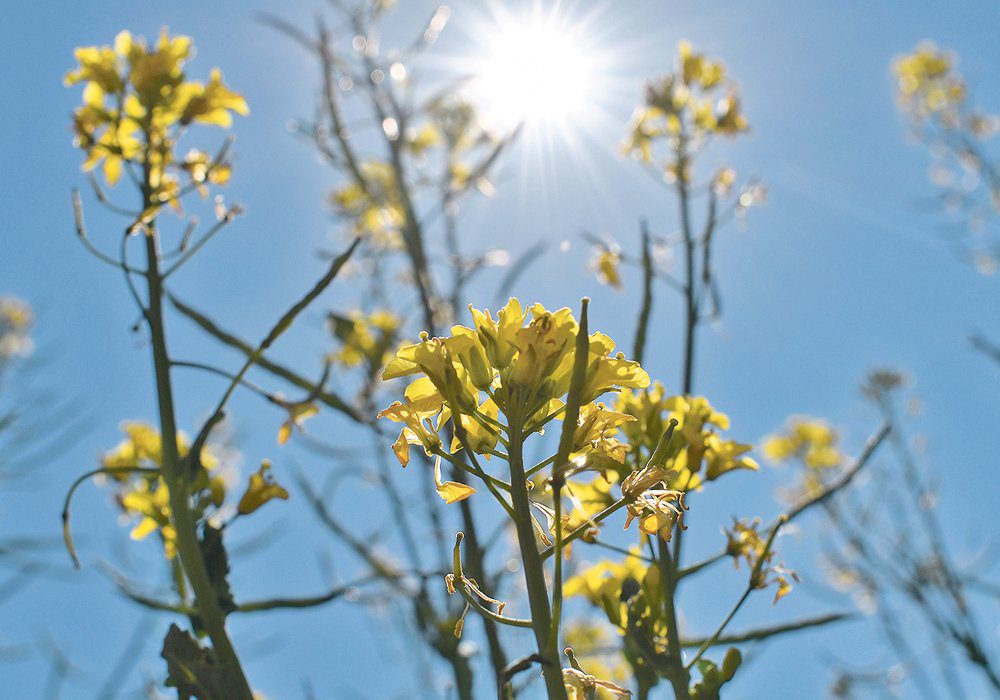Breeders continue to argue for varieties better suited to specific regions, including those that have hotter temperatures
It was a rough summer for canola crops in eastern Manitoba.
The weather was too hot and too dry for too long, which is hard on a cool season crop like canola.
“Many canola crops abruptly stopped flowering in the third week of July as overnight temperatures remained warm and soils continued to dry,” said the final provincial crop report of 2020, describing the growing season in eastern Manitoba.
“Producers and agronomists expressed concern over canola yield potential given the rough ride much of the crop was having in 2020.”
Read Also

New coal mine proposal met with old concerns
A smaller version of the previously rejected Grassy Mountain coal mine project in Crowsnest Pass is back on the table, and the Livingstone Landowners Group continues to voice concerns about the environmental risks.
Those concerns were valid.
Canola yields in the region were around 35 bushels per acre.
That’s low compared to other parts of the province, such as the northwest, where canola yields ranged from 40 to 60 bu. per acre.
“The lower than average canola yields disappointed many producers (in eastern Manitoba) and may affect planting intentions for 2021,” the crop report said.
Variation in yield is a normal part of farming. Northeastern Saskatchewan might have fantastic canola yields, thanks to timely rain or different canola seeding dates in the region. In the same year, southwestern Manitoba might produce an average canola crop.
Still, climate data shows that some regions are typically hotter than others.
Winnipeg recorded 14 days with temperatures above 27 C in July, while Grande Prairie had two days over 27 C.
This is an extreme example of temperature differences, but most observers know growing conditions north of Edmonton are not the same as Weyburn, Sask.
Given those differences, maybe it’s time for the canola industry to adjust its game plan.
“We still have quite broadly adapted products, but we are starting to see some of that differentiation of products by region,” said Chad Koscielny, North American canola breeding lead with Corteva Agriscience, who works out of the company’s centre in Carman, Man.
“I do envision a time, in the not too distant future, where we are not just one mega environment. And the product that you grow in the Peace River region might not be the one you’re growing around Winnipeg…. Different products, different regions, I think, is going to become absolutely critical.”
Eastern Manitoba wasn’t the only region with disappointing canola yields because of hot days and nights this summer.
Moose Jaw, for instance, recorded nearly 10 consecutive days above 30 C. The heat wave arrived after the middle of August, which likely hindered pod fill and yields.
Saskatchewan Agriculture, in its final crop report of 2020, estimated the average canola yield in the province as 37 bu. per acre.
Yields were much poorer in the southwest, where the average was 27 bu. acre.
Koscielny did his PhD on heat stress in canola at the University of Manitoba.
“The susceptibility of Brassica napus L. to increased temperatures within Western Canada requires attention if we hope to minimize the negative impact of heat stress on this key commodity,” he wrote in his PhD paper.
“The quickest route to increasing heat tolerance … (is) through discovery of heat tolerance variation within the primary gene pool.”
A summer like 2020 should help scientists like Koscielny identify canola varieties that perform under hot summer conditions. Hybrids in test plots that withstood the 30 degree days and still produced a decent yield can now be used to develop new and more resilient hybrids.
This is one way that plant breeders make advancements — by testing in adverse conditions. The key challenge for canola breeders is keeping up with the change in climate on the Prairies.
If they can breed and commercialize better products at a reasonable speed, “we’ll continue to keep pace with the rate of change,” Koscielny said.
“Where it gets dicey is if the rate of (climatic) change starts to go faster than our ability to recombine the best genetics.”
But focusing on a single trait, such as heat tolerance, isn’t the best way to improve canola plants. Breeders need to think about multiple traits, such as disease resistance, straw strength and shatter resistance, at the same time.
“Anytime you try to break plant breeding down into a single trait, it means you’re paying less attention to other traits and something will fall apart,” said Dale Burns, a canola breeder with Bayer CropScience Canada
As well, farmers won’t buy a hybrid with superior heat tolerance if the yield is three to five bushels lower than other varieties. Breeders think about that all the time, Koscielny said.
“When anybody ever asks me about trait priorities, I go back to what one of the salespeople told me: ‘I have five key priorities. They are yield, yield, yield, yield and yield.’ ”


















